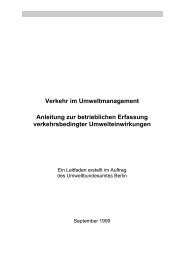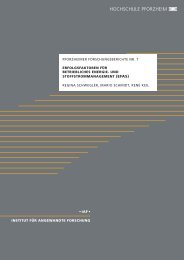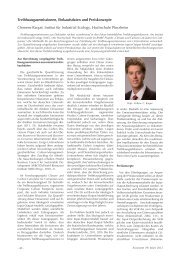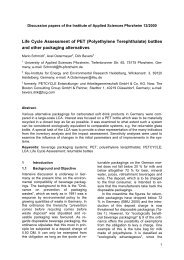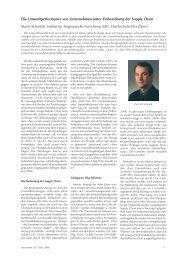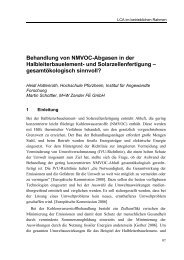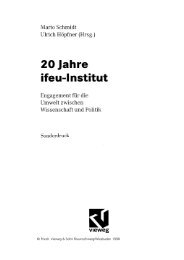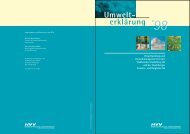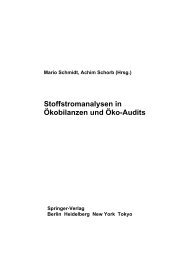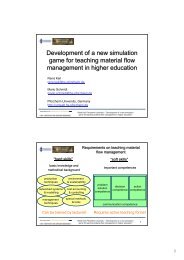article in press - und Umweltmanagement - Hochschule Pforzheim
article in press - und Umweltmanagement - Hochschule Pforzheim
article in press - und Umweltmanagement - Hochschule Pforzheim
You also want an ePaper? Increase the reach of your titles
YUMPU automatically turns print PDFs into web optimized ePapers that Google loves.
ARTICLE IN PRESS8M. Schmidt / Environmental Impact Assessment Review xx (2005) xxx–xxxrevenue is obviously the sum of the bad enter<strong>in</strong>g and the good leav<strong>in</strong>g the system, and theexpenditure is the sum of the good enter<strong>in</strong>g and the bad leav<strong>in</strong>g the system. Rememberthat the dist<strong>in</strong>ction between good and bad is made by the market at any time.However, the purpose of a system is very often to create one specific revenue, e.g. toproduce one good (the system is then called a production system) or to reduce one bad (thesystem is then called a recycl<strong>in</strong>g or disposal system). Given this <strong>in</strong>tended revenue, theoverall expenditure will be allocated to it. We call this purpose-based focus on a specific<strong>in</strong>put or output of the system a perspective. Perspectives are useful for the analysis andcommunication of system properties, as will be shown <strong>in</strong> Section 4. Given a perspective,the <strong>in</strong>direct environmental impacts already mentioned simply represent a question ofsystem bo<strong>und</strong>aries. If the system has been selected suitably, the <strong>in</strong>direct environmentalimpacts of <strong>in</strong>dividual processes will be captured elsewhere <strong>in</strong> the system as directenvironmental impacts.3. System modell<strong>in</strong>g with the aid of netsOne way of describ<strong>in</strong>g closed-loop systems as a model is to display them as nets orgraphs. Möller (1994) <strong>in</strong>troduced the bmaterial flow netsQ <strong>in</strong> which the nodes are<strong>in</strong>terpreted as transformation processes and the arrows as material flows. By <strong>in</strong>troduc<strong>in</strong>g asecond type of node – by analogy with the Petri net from theoretical <strong>in</strong>formatics – it is alsopossible to map storage processes. This allows a dist<strong>in</strong>ction to be made between activitiesand states, thus also permitt<strong>in</strong>g time-based analysis for <strong>in</strong>stance.Fig. 3a) shows a simple net as an <strong>in</strong>put/output graph. Each process is described throughits <strong>in</strong>put flows and its output flows that can stand <strong>in</strong> a functional connection with eachother (Schmidt and Keil, 2002). By l<strong>in</strong>k<strong>in</strong>g the processes it is possible to build up systemsa)G1G2G6systembo<strong>und</strong>aryG7P1 G3 P2 G4 P3G5B1 B2 B3R G5b)ExpendituresRevenuese 1_G1e 2_G3e 3_G4e 1_G2r 1_G3 e 2_G6r 2_G4 e 3_G7e 2_G3e 3_G4e 1_B1e 2_B2e 3_B3r 3_G5Fig. 3. a) An I/O graph of a cha<strong>in</strong> of three processes; b) the correspond<strong>in</strong>g expenditure–revenue graph.



